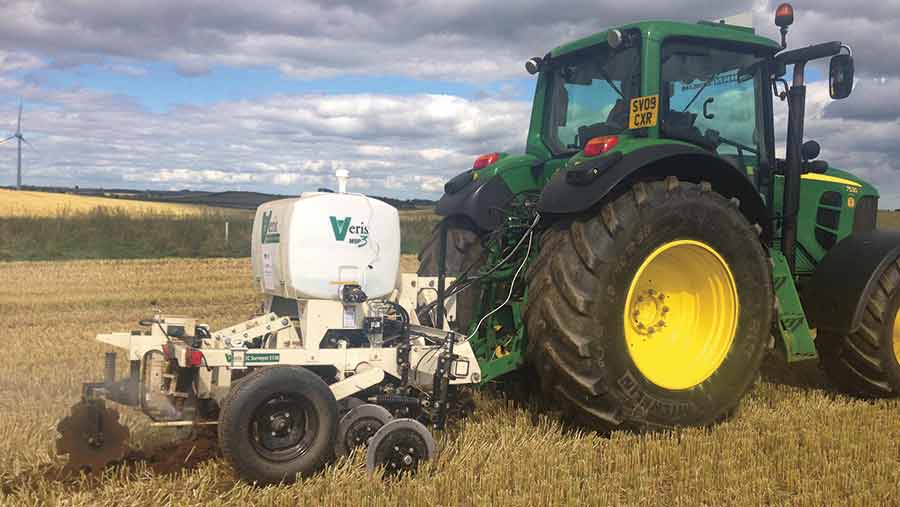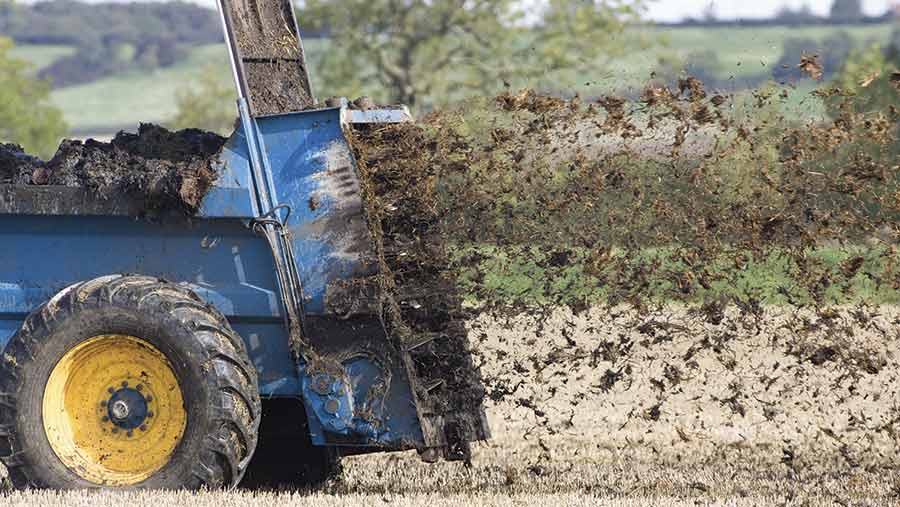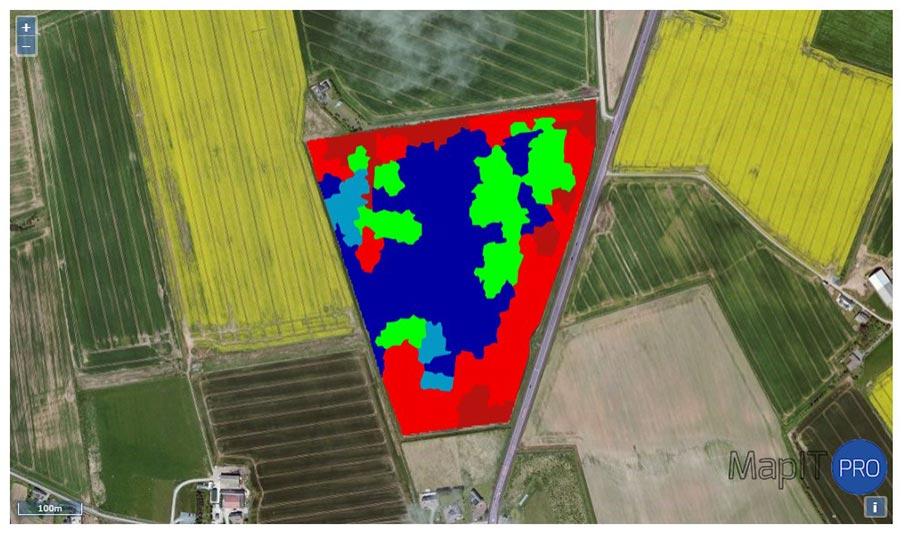Many arable farmers still missing out on benefits of precision farming

© Agrovista
On-farm yields have stagnated and poorly performing areas of fields are dragging averages down, effectively increasing the cost of producing a tonne of wheat.
That is the view of Lewis McKerrow, head of precision farming at Agrovista, who believes precision farming can help target these underperforming parts of fields.
“There is a gap between potential yields in a field and what is being seen. The challenge is to bridge this gap.”
A good illustration is the difference between the headland and the middle of the field.
See also: How to protect profits with precision farming technology
“If you remove the headland, you would see a big difference in yield. That is because they are dragging the field average down and technology can help bring this back up.”
But where do you start? It is a minefield of technology with drones, tractor-mounted sensors, mapping and much more.
He believes a good starting point is the yield map generated by the combine, but many growers are failing to get the most out of them.
That’s because there is a perception that precision farming is complicated and costs too much, but that is not the case.
Yield mapping first appeared in 1996 and the last decade has seen auto shut off on drills plus the introduction of auto steer guidance, eliminating misses and overlaps.
Why bother with precision farming?
It’s all about making every hectare count, he says. “Applying flat rate inputs to variable fields will lead to variable returns. If it is variable, you can measure it and then the aim is to correct and balance it.
“However, in some circumstances such as poor soil and stony areas, it is never going to yield, so you need to look at optimising inputs.
“So why spend so much on nitrogen fertiliser if not going to get a return.”

© Tim Scrivener
Mr McKerrow says farmers who use precision farming are divided into different groups.
There are the technology lovers who love new gadgets, large businesses wanting to utilise their investment and those who have tried and not seen the value of precision farming and are perhaps on the verge of giving up.
“In the early days it was sold as a way to save money and some didn’t see this so became disillusioned. But it is about increasing yields and using inputs better.”
Big future or a fad?
Technology is definitely here to stay as tractors and machinery get ever more complex and there is the need to raise production.
More critically, he adds, farmers need to be more efficient to survive. Technology enables them to measure and analyse performance so that they can question, “can we do that better?”

© Agrovista
However, what has been missing is bringing all the elements together such as soil analysis, variety selection, climate, inputs etc. “All have been done in isolation.”
By bringing together data like soil type, previous yield map and price of grain, you can produce a return on investment map. This will enable farmers to maximise returns.
To help farmers get more out of the technology, Agrovista is investing in precision farming support and services. “Advice now needs to be field-based not crop-based and across rotation. The focus also needs to be on £/t and not £/ha,” says Mr McKerrow.
A key part of this is data management and Axis is overarching computer system with bolt-ons to address specific such as weather forecasts for spraying, mapping and grain marketing. One aim is to enable farmers to use iPads in the field.
Tablets such as iPads can reduce paperwork and avoid double entry of data, which is a common bugbear of farmers.
Organic matter maps
Another area of development is Agrovista’s new soil organic matter maps, which identify variation across a field.
“Farmers can then target organic matter applications to the parts of fields that need it most. Cover cropping can also be tweaked, perhaps matching different species according to organic matter content.”
Low soil organic matter levels can normally mean lower yields on the same soil type. Fields are mapped using the Veris machine imported from the US which is mounted on the back of a tractor. It measures pH, conductivity and organic matter in a single pass.
Future of farming technology
 Agrovista’s Lewis McKerrow (pictured) sees a future with sprayers having individual nozzle control, enabling patch spraying of weeds.
Agrovista’s Lewis McKerrow (pictured) sees a future with sprayers having individual nozzle control, enabling patch spraying of weeds.
And the technology is already here to enable this, he adds.
Unlike some systems that rely on sprayer-mounted sensors which can suffer a lag time, mapping means the sprayer already knows that a patch is coming up.
But the ultimate answer would be a tank mix on the move system allowing patches to be treated with different products according to weed type. Other future possibilities include ultra-low water volumes and even drones spraying patches.
Beyond crop protection, there could be sensors which already measure soil moisture and temperature also providing real time data on soil P, K and Mg in real time.
“Robotics may offer benefits and rather than having a 40ft combine, farmer could have four 10ft combines in a field all robotically driven.”
Economics of precision farming
Precision farming is often perceived as expensive and something for much larger arable businesses, but the benefits of variable nitrogen applications alone will cover the cost on a modest 100ha farm.
As Lewis McKerrow explains, the costs add up to a total of £30/ha a year for the full mapping, variable N and base fertiliser options.
Costing for a 100ha farm including retrofitting the combine for yield mapping:
- Soil mapping £6/ha/year
- Conductivity mapping £3/ha (one-off cost)
- Yield mapping £4/ha/year based on retrospective refit of combine
- Variable rate base fertiliser spreading £3/ha/year
- Variable rate nitrogen £7/ha/year
- Software £5/ha/year
- Data management £2/ha
- Total £30/ha/year
It just needs a 0.25t/ha yield increase with wheat at £110/t to cover the cost. However, on average variable nitrogen can lift yield of an 8t/ha crop by 0.48t/ha.
Agrovista is already seeing interest from smaller arable businesses. “We are seeing more farms at 100ha using precision farming as the technology improves and costs reduce. “Although most of our users run larger units, which scales up the savings and benefits, smaller farms can obtain some very real advantages too.”

